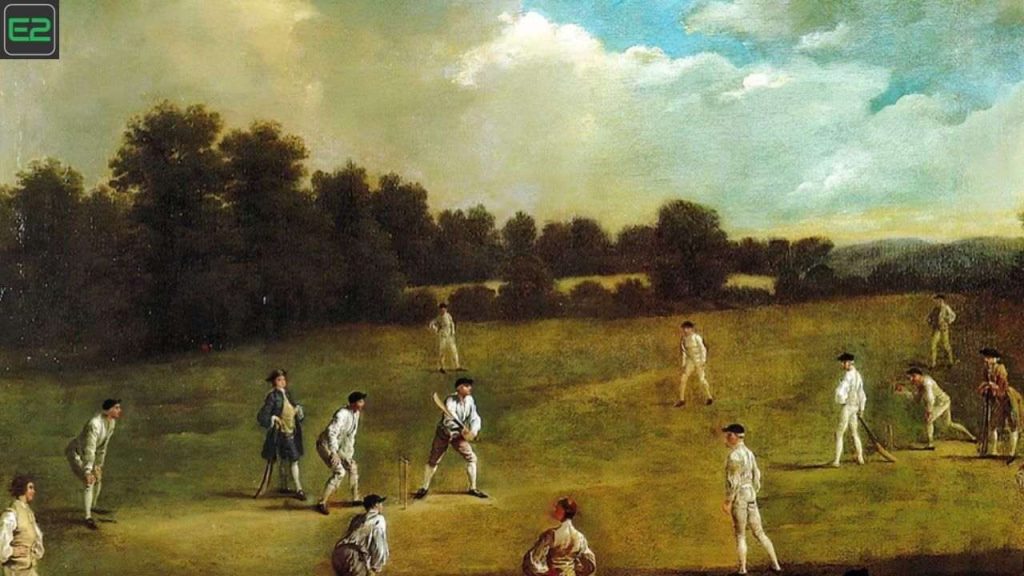History of Cricket: Cricket is one of the oldest organized sports, with roots tracing back to the late 16th century. Its origins are often attributed to southeast England, where children in Weald, Kent, played a game involving a ball and a stick in open fields. By the early 17th century, adults had adopted and refined the game, and the first known recorded match occurred in 1611. Over time, cricket evolved from a rural pastime to a structured sport with established rules.
History of Cricket: 17th to 18th Century: Growth and Formalization

Cricket began to take on a more organized structure in the early 18th century. The first known laws of cricket were codified in 1744, which introduced fundamental elements like the length of the pitch, size of the stumps, and scoring methods. This period saw the founding of the Marylebone Cricket Club (MCC) in 1787, which became the sport’s governing body and remained the main authority on the game’s rules. In 1788, the MCC published the first official Laws of Cricket, setting standards still recognizable in the modern game.
The 18th century also saw the evolution of techniques and equipment. Bowlers developed various techniques, and players began to use specialized equipment, such as protective pads and gloves. Cricket’s popularity surged across England, with inter-county matches becoming common.
History of Cricket 19th Century: International Expansion

Cricket’s appeal spread globally in the 19th century, particularly through British colonialism. By the mid-1800s, cricket had reached countries like Australia, the West Indies, India, and South Africa. The first international cricket match was held between Canada and the United States in 1844. In 1877, England and Australia played the first official Test match at the Melbourne Cricket Ground, marking the start of international Test cricket. Australia became a key player in cricket, and by the 1880s, “The Ashes” series between England and Australia emerged as one of cricket’s most celebrated contests.
The 19th century also saw the development of amateur and professional distinctions within the sport, with cricket clubs forming and matches becoming increasingly organized.
History of Cricket 20th Century: Rise of Limited-Overs Cricket and Globalization

In the 20th century, cricket underwent significant changes in structure, popularity, and reach. The Imperial Cricket Conference, established in 1909 (later becoming the International Cricket Council, or ICC), was created to organize international cricket, allowing other countries to join the sport.
Limited-overs cricket, also known as one-day cricket, was introduced in the 1960s, offering a shorter and faster-paced version of the traditional game. The first Cricket World Cup took place in 1975 in England, drawing large audiences and sponsorships and setting the stage for future tournaments. This format became popular worldwide, and the sport’s commercialization began in earnest, with endorsements, sponsorships, and television broadcasts transforming cricket into a profitable venture.
21st Century: T20 and Cricket’s Modern Evolution

In 2003, the ICC introduced the Twenty20 (T20) format, a condensed version of the game lasting around three hours. T20 was an instant success, appealing to new and younger audiences with its fast pace and high-energy atmosphere. This format led to the creation of professional leagues, such as the Indian Premier League (IPL), which further globalized the sport, attracting international players and expanding its viewership.
Today, cricket continues to thrive with three primary formats: Test, One-Day International (ODI), and T20. Each format has its distinct appeal and fanbase, while the sport itself is played in over 100 countries. The ICC continues to oversee international matches, while national leagues like the IPL, Big Bash, and Caribbean Premier League (CPL) enhance cricket’s global reach.
Cricket’s journey from a local English pastime to a globally beloved sport is a testament to its adaptability, cultural impact, and enduring appeal. It remains a vital part of the sporting landscape, with ongoing innovations and growing international participation.
You will have fun playing exciting games on here: E2Bet
Here Are Some Helpful Tips:












